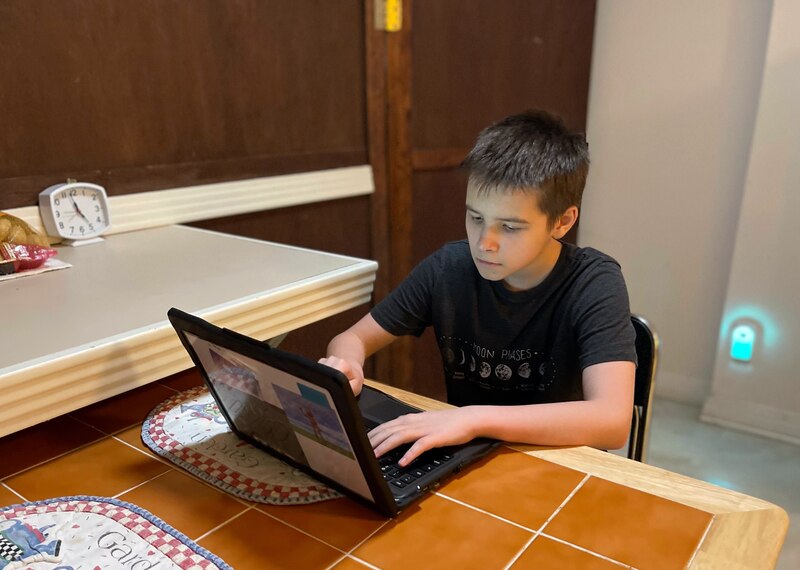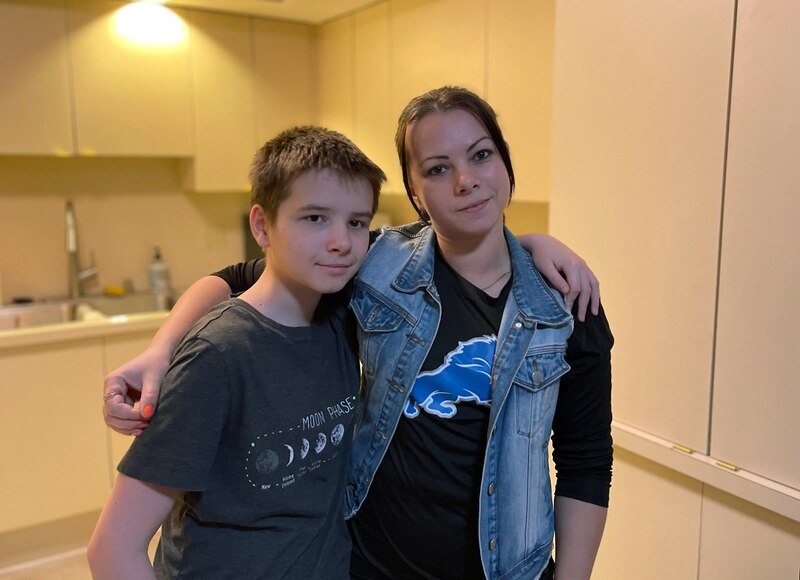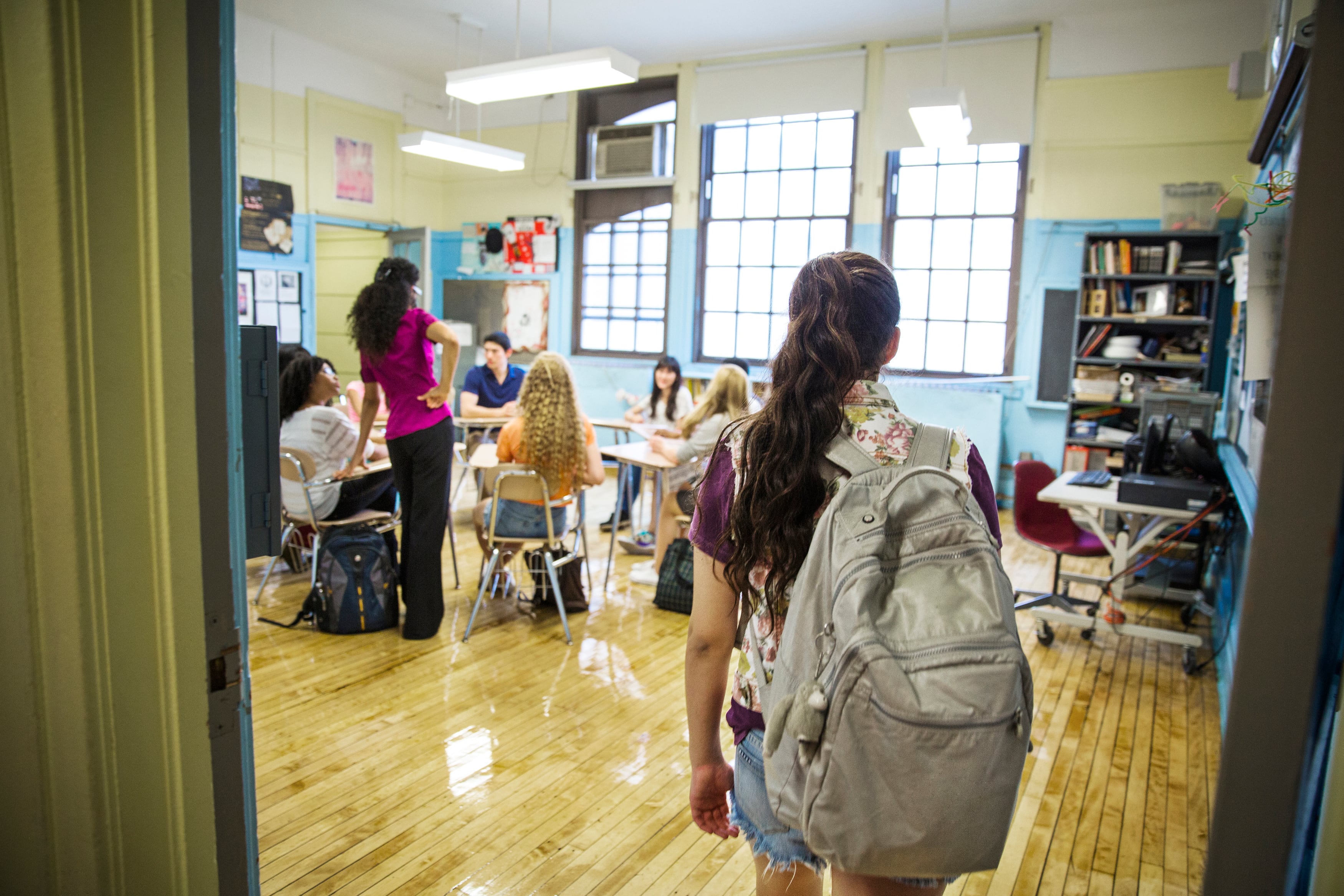As an influx of school-aged migrant and refugee children have resettled with their families in Detroit in recent weeks, schools are working to quickly adapt to meet their needs.
Some are more prepared than others.
Detroit Public Schools Community District campuses on the southwest side of the city have long served diverse student groups and have many Spanish-speaking teachers and administrators who can easily communicate with parents. But a large number of students who have recently migrated to the U.S. are being placed in available shelter beds on the city’s east side, where schools have historically served children with different needs.
“It’s no fault of the schools,” said Elizabeth Orozco-Vasquez, CEO of Freedom House Detroit, a nonprofit that supports asylum seekers and refugees. “It’s just that they’ve never had to prepare for that before. Meeting the needs of a new population of kids is a big ask to put on an already tasked school system.”
Translation services in those schools are often limited. Additionally, transportation for kids to attend schools in southwest Detroit can be difficult to arrange, advocates say. The district is required by the federal McKinney-Vento Homelessness Assistance Act to help students without a fixed address maintain school stability.
“We are seeing a lot of school-aged children come in, primarily in schools outside of southwest Detroit that aren’t necessarily prepared for children coming from other countries who don’t speak English,” said Orozco-Vasquez. “It’s a resource that has to be built.”
About 70 families who recently arrived from Venezuela enrolled their children in DPSCD, according to the district, and the number continues to grow. Administrators say they are providing language interpretation and translation, and training staff to understand new students’ unique needs. In the long term, the district is considering establishing newcomer programs, which would centralize students at specific schools to streamline services for migrant and refugee children.
Detroit hasn’t seen the large numbers of migrants and refugees arriving that large cities like Chicago and New York have in recent months. But some of the families arriving in Detroit are coming from those cities because shelters and humanitarian organizations there are overwhelmed.
DPSCD is working to meet students’ needs
Superintendent Nikolai Vitti said in an email all schools in the district are now receiving support as they adapt to meet the needs of migrant students. Staff are being trained to use translation tools, to identify curricular resources to help students learn English, and to address the trauma the kids may have experienced.
The district has formed a small team of teacher training and support coordinators specializing in English language learning to deploy to schools with newcomer students, he said. DPSCD is also continuing to collaborate with community members through its Bilingual Parent Advisory Council as well as the Office of Family and Community Engagement to meet the families’ needs.
Staff can request a live interpreter and document translations, said Vitti. The district also offers over-the-phone and remote video interpreters, and students and staff are able to use Microsoft Translate.
“The district is working with all school leaders and teachers to make sure that they are fully aware of these resources and use them consistently to communicate with families who need language services,” said Vitti.
Part of the challenge, said Orozco-Vasquez, is that the newly arrived students are speaking many languages. In addition to Spanish-speakers, some speak Portuguese or French.
Some nonprofit organizations work with school districts to fill gaps in providing language support to refugee students. Samaritas, a faith-based statewide nonprofit, works with DPSCD.
“If there is no comprehensive ELL program in place, we work with the school on providing that,” Rawan Alramahi, supervisor of Samaritas’ school impact program.
Funding from a $94.4 million settlement – from a 2016 lawsuit that alleged Michigan failed to teach Detroit students to read and described inadequate education for English language learners – will likely allow the school system to hire more academic interventionists to work with English language learners, the superintendent said. A task force formed to identify how DPSCD should spend the settlement recently recommended the district do so.
The settlement funding will also be used to help the district determine whether there is a need for more newcomer programs to be developed at schools in DPSCD to “better serve first- and second-year immigrants,” Vitti said. There is one existing program at Western International High School that provides academic and social support to newcomer families.
“Through this strategy, newly arrived students with limited English skills would be assigned to these schools so we can concentrate resources for support, such as ELL teachers and [academic interventionists],” said Vitti.
The planned Health Hub at Western International, which will provide medical, dental, and mental health care, will also have a resource center with services for newly arrived families, said Vitti. Other Health Hubs, which will expand over the next three years at schools across the district, may also have the same focus, depending on need, according to the superintendent.
For migrant students who experience homelessness or are housed in shelters, the district will provide all the services guaranteed by the McKinney-Vento Act, which mandates that unhoused students be allowed to quickly enroll in schools, stay in the same school even if they move outside of enrollment boundaries, and receive transportation to their schools regardless of the distance, among other protections.
Overall, the district’s system for identifying students who need services through the act has improved, said Vitti. The need for transportation services with that funding has increased in the community across the board and is not unique to newcomer or refugee students.
“Newcomer and refugee students are not always homeless, but when they are, we are committed to providing transportation services,” said Vitti.
In the past, there were concerns about DPSCD’s ability to educate English language learners, who graduate from high school at lower rates compared to their English-speaking peers. Parents expressed a need for more language access in the district, and felt their concerns were ignored.
Inequities for ELL students is not unique to DPSCD. Michigan ranks among the lowest in the nation for funding for students who are not native English speakers, according to an analysis by The Education Trust-Midwest.
Last year, the state passed a historic school budget that provided $1.3 million more in funding for ELL students.
Some migrant families arrive from Chicago, New York, Texas
Most of Detroit’s migrant students have come from Venezuela, according to the school district.
Others are coming from Columbia, Angola, Senegal, Haiti, and the Democratic Republic of Congo. Orozco-Vasquez said there is a mix of families coming from larger cities like New York and Chicago as well as various cities in Texas, where officials have struggled to keep up with the growing need for services for migrants, as well as people coming directly from their countries of origin.
Samaritas is currently serving more than 250 school-age children, and has recently seen more families coming from Venezuela and Cuba, along with families from Syria, Iraq, Afghanistan, and Ukraine.
Both Freedom House and Samaritas said most of the newly arrived school-age children they serve have enrolled in DPSCD, and some are attending charter schools in Wayne County.
The increase in the number of families migrating to Michigan isn’t expected to slow anytime soon – officials expect to see a 40% increase in refugees settling in the state this year, which would amount to more than 3,600 people. As demand for temporary housing grows, the Office of Global Michigan this week asked residents to open their homes as part of a refugee support program.
Michigan has long been a destination for refugees and asylum seekers. Though the recent influx of migrants is sizable, it’s not the largest the state has experienced.
In 2013, more than 3,400 Iraqi refugees resettled in Michigan. And after Russia invaded Ukraine in 2022, more than 2,000 refugees came to live in the state.
DPSCD has also previously seen influxes of migrants. More than 40 refugees from Afghanistan enrolled in the district in May 2022.
Navigating a foreign school system

In addition to DPSCD and other schools in Wayne County, refugees are also being placed and enrolling in schools in Macomb, Oakland, and Genesee Counties.
One mother, Svitlana Nakonechna, 33, arrived in the U.S. three years ago after fleeing the war in Ukraine with her son, Ivan Nakonechngi, now 13.
Nakonechna is still learning English, and she communicates with Ivan’s teachers at South Hills Middle School in Bloomfield Hills Schools through an online translator application in email and on video calls. The mother tries to keep up with Ivan’s grades and when his work is due.
“Usually, I keep track of that since she’s not really good with English,” said Ivan, who began learning English in school in Ukraine.

Nakonechna said through an interpreter that she doesn’t know much about the curriculum Ivan is being taught, but she trusts he’s learning because she sees he’s engaged in his school work.
Though her sponsors and Samaritas have been helpful in enrolling her son in school and navigating the system, Nakonechna worries what may happen if she has to move out of the housing she receives through her employer to another school district.
“If we move from this place to another city and I need to find a new school, I still will need help because I don’t know how to handle it by myself,” she said.
Hannah Dellinger covers K-12 education and state education policy for Chalkbeat Detroit. You can reach her at hdellinger@chalkbeat.org.





